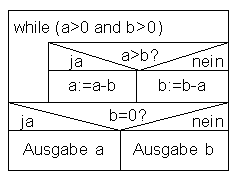Hey,
Ich lerne gerade Programmieren.
Und habe HTML schon gelernt und jetzt will ich .exe lernen und ich frage mich wenn man halt die .exe startet...
Ahh ich habs wie beim UHG dann kommt ja
D = Zusammenstellung vom UHG
. =...................................
. =...................................
Was muss man in der .txt schreiben damit in der .exe DAS kommt ?
Und wie macht man dann wenn ich D drücke werden die Sachen ja gelanden ohne das man ständig Downloaden Downloaden Downloaden drücken muss wie geht das das der dann den LINK durchsucht und die Datei downloaded dass ...
MfG
Ich lerne gerade Programmieren.
Und habe HTML schon gelernt und jetzt will ich .exe lernen und ich frage mich wenn man halt die .exe startet...
Ahh ich habs wie beim UHG dann kommt ja
D = Zusammenstellung vom UHG
. =...................................
. =...................................
Was muss man in der .txt schreiben damit in der .exe DAS kommt ?
Und wie macht man dann wenn ich D drücke werden die Sachen ja gelanden ohne das man ständig Downloaden Downloaden Downloaden drücken muss wie geht das das der dann den LINK durchsucht und die Datei downloaded dass ...
MfG











